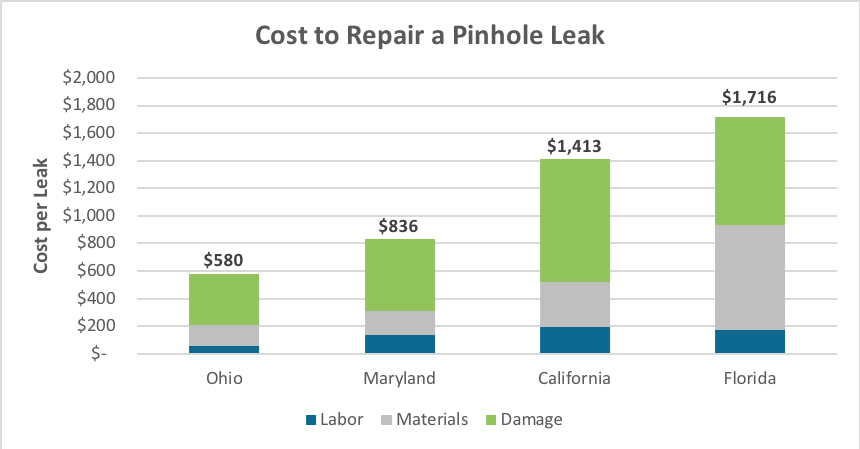Pipe Corrosion Problem
Corrosion Costs Over $36 Billion A Year*
Corrosion At The Utility
- Utilities add corrosion inhibitors such as silicates and phosphates to protect their pipes.
- The EPA requires municipal water authorities to use corrosion inhibitors, based on the composition of their water, to prevent lead, copper, and iron from leaching out of the pipes and flowing downstream to consumers.
- The anti-corrosive protection used by the utilities does not extend all the way to buildings and homes.
Corrosion For The Consumer
Corrosive water that enters a building has low pH, alkalinity, and total hardness and high levels of dissolved solids and chlorine. Much of the municipal water in the United States is measured as highly corrosive using the industry standard Ryznar and Langelier corrosion indices. These characteristics can lead to several problems:
- Leaks due to pipe thinning or pipe pitting
- Fixture blockage
- Discolored drinking water
- Metals in drinking water
The True Cost Of A Pinhole Leak

While pinhole leaks are costly and a nuisance to maintenance managers and affected residents, the reality is that their true cost is far greater than it appears on the surface. In addition to the labor and material costs to stop and repair the leak, there are indirect costs that can be exponentially higher. From personal property damage caused by leaks, to brand reputation to the property and resident dis-satisfaction, the impacts of pinhole leaks are often much worse than the leak itself. In fact, if a property has plaster walls, asbestos insulation or mold due to leaks then the cost can be far greater than shown in the graph above.
